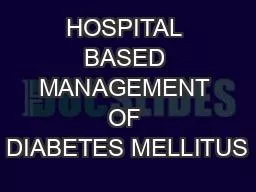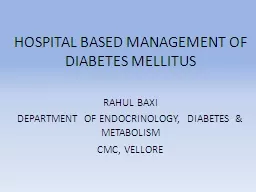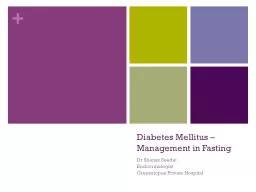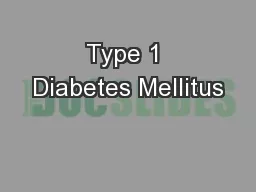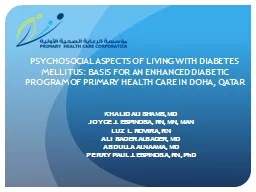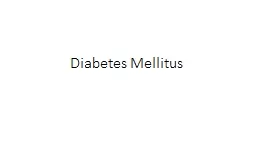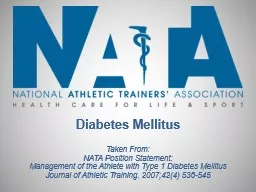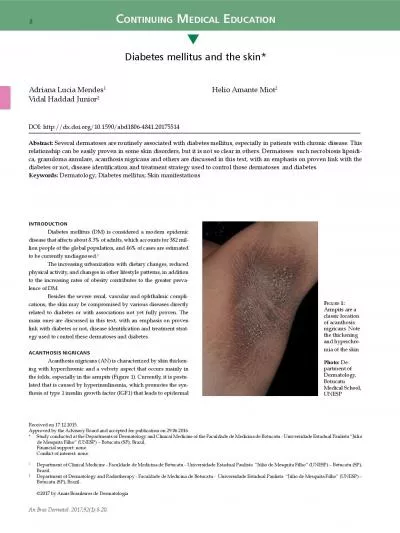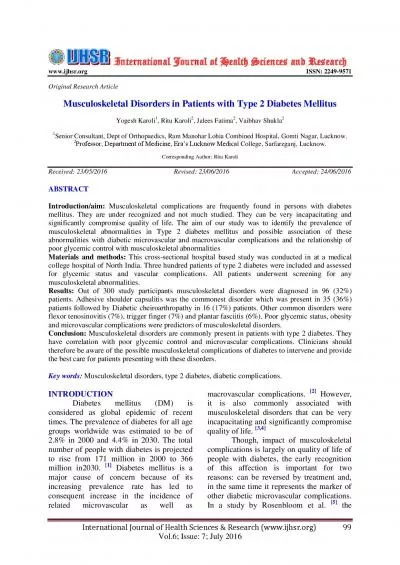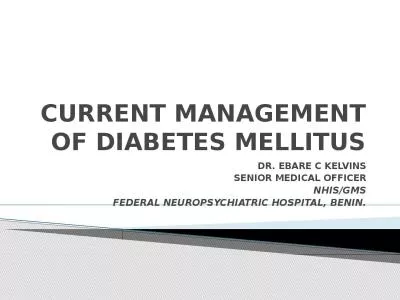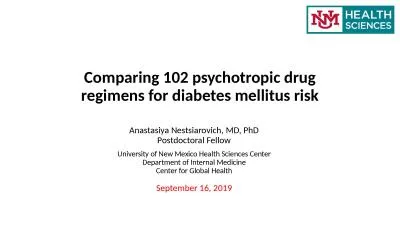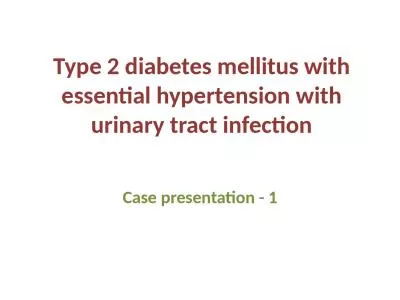PPT-HOSPITAL BASED MANAGEMENT OF DIABETES MELLITUS
Author : askindma | Published Date : 2020-08-29
RAHUL BAXI DEPARTMENT OF ENDOCRINOLOGY DIABETES amp METABOLISM CMC VELLORE THE PROBLEM Current figures for 201011 51 million diabetic patients in India projected
Presentation Embed Code
Download Presentation
Download Presentation The PPT/PDF document "HOSPITAL BASED MANAGEMENT OF DIABETES ME..." is the property of its rightful owner. Permission is granted to download and print the materials on this website for personal, non-commercial use only, and to display it on your personal computer provided you do not modify the materials and that you retain all copyright notices contained in the materials. By downloading content from our website, you accept the terms of this agreement.
HOSPITAL BASED MANAGEMENT OF DIABETES MELLITUS: Transcript
Download Rules Of Document
"HOSPITAL BASED MANAGEMENT OF DIABETES MELLITUS"The content belongs to its owner. You may download and print it for personal use, without modification, and keep all copyright notices. By downloading, you agree to these terms.
Related Documents

